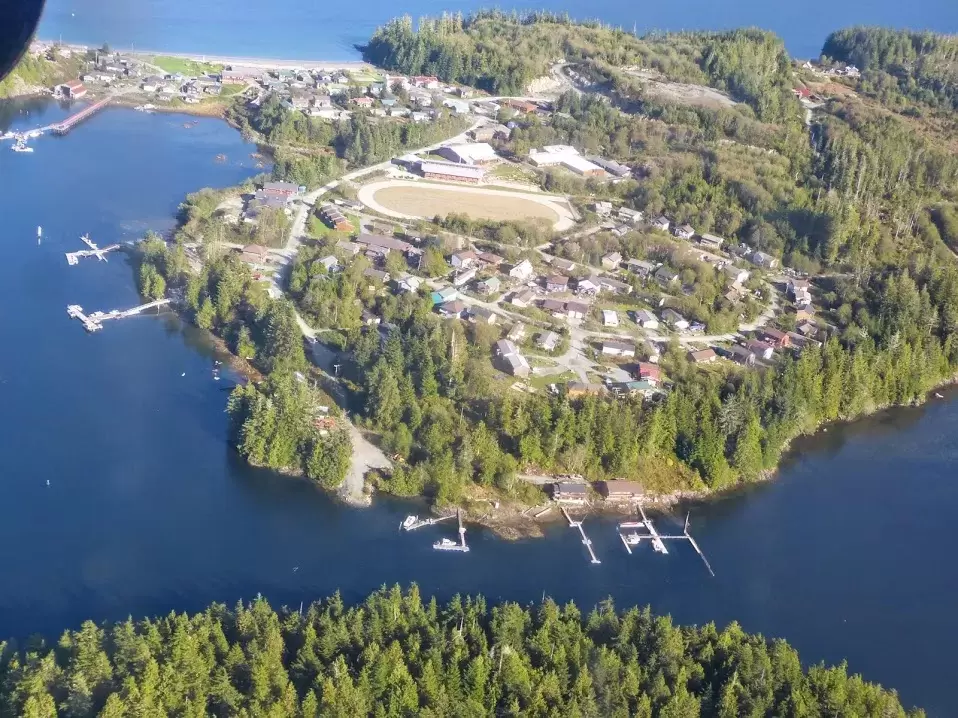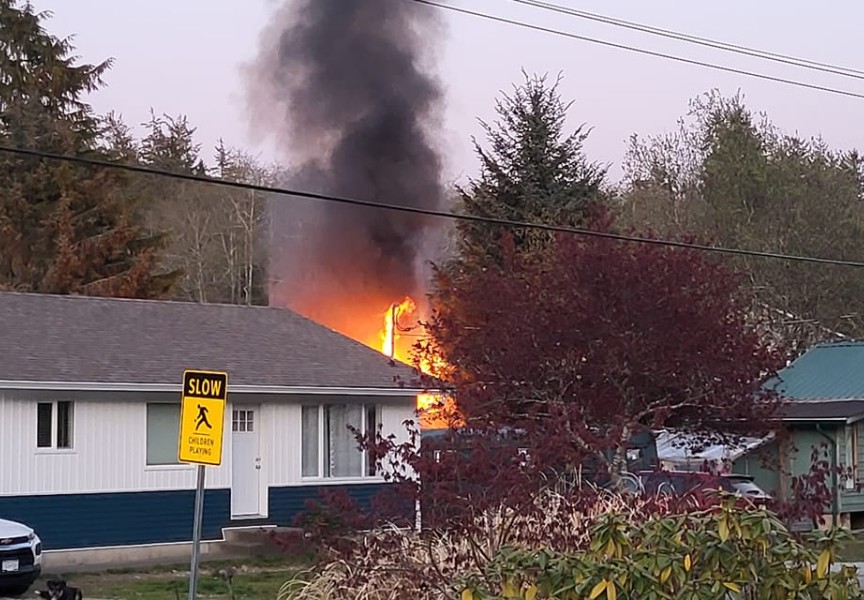The Standing Senate Committee on Aboriginal Peoples sent a delegation to Ahousaht Oct. 8 as part of a fact-finding tour on housing in British Columbia first nation communities.
The senators visited Tsartlip, Nanoose, We Wai Kai, Ahousaht, Osoyoos, Westbank and Tk’emlups nations during the week of Oct. 6 to Oct. 10 to meet community leaders and hear what their housing issues are.
“The first phase of our study is a focus on housing,” said Senator Dennis Patterson, chair of the committee, “and we have heard from witnesses in Ottawa and from communities we visited in Nova Scotia and Ontario to determine innovative options to address those needs, with the objective of enhancing social and economic development.”
The senators were scheduled to fly from Campbell River to Ahousaht on the morning of Oct. 8, but were grounded due to fog. The heavy mist that day gave the committee a clear picture of the transportation issues an isolated island community like Ahousaht must face.
Patterson told Ha-Shilth-Sa he regrets that the trip to Ahousaht was cut short due to weather and the senators didn’t have time to visit family homes, but he said Ahousaht leadership stressed the serious housing issues that must be addressed.
The committee had the experience of visiting remote communities in northern Ontario and noted the high cost of transporting construction materials to the communities. While Ahousaht is closer to urban centers than those in northern Ontario, Ahousaht’s only ‘road’ into the community is the ocean.
Patterson said it was worthwhile traveling to Ahousaht where they learned there is no ferry service.
“That’s not something everybody knows,” said Patterson.
Winter storms make for risky travel between Ahousaht and Tofino and that is a unique circumstance for the senators to consider.
The wet, West Coast climate creates mold and the community has issues with proper drainage around homes.
If there was to be a silver lining to the wait the senators had for the plane to Ahousaht it was that they were able to spend half a day discussing all they’ve learned and begin formulating their recommendations.
Their visit to the West Coast, said Senator Patterson, reinforced observations they had already made and one is it appears there is a one-size-fits-all approach to first nation housing by the federal agencies. The federal government has two departments that provide on-reserve housing assistance: Aboriginal Affairs and Northern Development Canada (AANDC) and Canada Mortgage and Housing Corporation (CMHC). According to CMHC the federal government spends about $300 million per year to address on-reserve housing needs.
“It seems that there is no proper consideration of the cost of remoteness or of climate,” Patterson said.
Rapid population growth is something else that is not factored in when it comes to first nations housing.
The senators heard from Ahousaht that their on-reserve community numbers about 1,000 residents and about 45 per cent of them are under the age of 18.
In the past year 44 babies were born into the community and the year before that 35 babies were born.
The senators will take what they’ve learned in the past year about on reserve housing and deliver a report with recommendations to Parliament.
While the senators make it clear they are not the government, Patterson said once the report is tabled the government is required to respond to each of their recommendations.
Some of those recommendations could involve possible solutions for land tenure issues on reserve. Under the current Indian Act system it is difficult for band members to get financing for privately-owned homes because neither the first nation nor the band members hold fee simple title to the land.
The senators are also considering quality of construction, building codes (or lack thereof), and building inspections.
Other issues they are looking at include funding formulas for on-reserve housing and how dollars are allocated, whether or not the added cost of living in a remote region is factored into funding formulas, and whether or not it makes sense to have two major federal housing authorities for on-reserve housing.
“This problem goes beyond partisan politics,” said Patterson, adding “these are long-standing issues that have not been addressed by the present or past governments.”
“It seems surprising to us, considering how important housing is when it comes to health, education, social issues or general well-being of the community, that this subject has not been intensively studied in recent years,” said Patterson.
He went on to say that the senators are very committed to delivering their report and recommendations before the Upper Chamber breaks on Dec. 19 of this year.
“We are hoping to have an impact by constructing solutions for government,” said Patterson. The life of Parliament, he said is in its last year so by making their Dec. 19 deadline, Patterson said they are almost certain to get a response from government in the New Year.
The next phase of the investigation will focus on infrastructure in First Nations communities.







